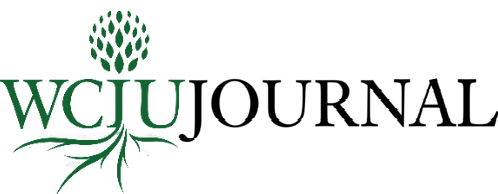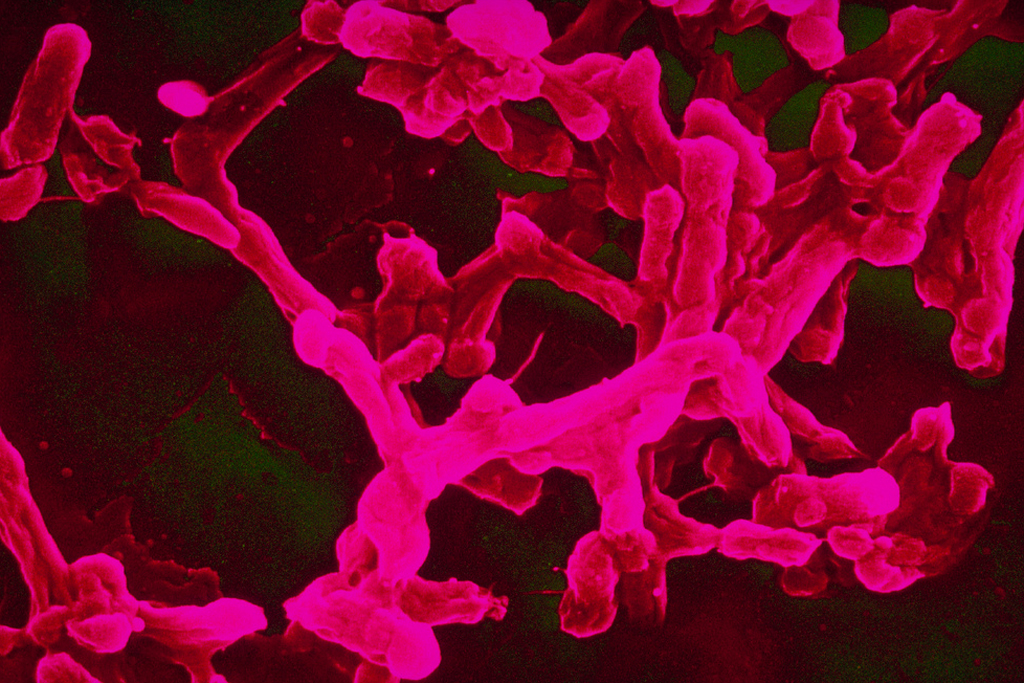Phyto-Bioactive Food Pyramid©: A Healthy Dietary Plan for Preventing Certain Common Cancers
Richard Gunasekera is Associate Dean and Professor, Academic and Research Affairs and Professor of Biological Sciences at Biola University.
WCIU Journal: Health and Disease Topic
October, 2014
by Richard Gunasekera
With research associates, Jasia Baig, Siva Somasundaram, and Carolyn Oates
Introduction
Prostate and breast cancer are the most prevalent cancers among men and women, respectively, particularly in the United States. Their pathogenesis includes multiple genetic and epigenetic mechanisms, including effects from environmental factors. The progression from a low-grade lesion to an aggressive adenocarcinoma takes several years. Therefore, both prostate and breast cancer typically have a very long latency period that provides a window of opportunity for intervention by cancer-preventive agents. Accumulated scientific evidence suggests that certain cancers, particularly those that have hormonal origins such as prostate and breast cancer, are more likely to occur in people with unhealthy diets, low physical activity, and obesity (http://www.cdc.gov/HealthyYouth/). Also see these websites:
http://www.cancer.gov/cancertopics/factsheet/Risk/obesity
http://jn.nutrition.org/content/135/12/2934S.full
http://sehn.org/wp-content/uploads/2014/03/EcolOfBC_Chap8.pdf
In fact, an increasingly large body of epidemiologic and medical literature demonstrates that as many as 30-40% of all cancer cases are related to unhealthy dietary habits (Donaldson 2004, 319). Increasing evidence substantiates the fact that a prudent diet has protective effects against various cancers. Dietary patterns with higher intake of sweets and fast foods have been associated with higher risk of colon, breast, prostate, and several other cancers (Thorogood et al. 1994, 1667-70). On the other hand, a healthy dietary pattern with higher intake of fruits and vegetables, which contributes to higher intake of dietary phytochemicals and increased levels of antioxidants, has been associated with lower risks of many cancers (Kushi et al. 2006, 254-81). These are important cues that link nutritional aspects with cancer. Foods that are abundant in phytochemicals include various fruits and vegetables, including whole grains and green tea.
Although the relationship between health and diet is complex, there are some dietary phytochemicals that seem to offer protection based on their specific bioactive configuration and their concentration levels. Several molecular targets and biochemical signaling pathways that are affected by phytochemicals have been discovered. These targets could be certain DNA sequences, enzymes and their cofactors, and transcription factors such as the nuclear factor kappa B. Studies have shown that dietary phytochemicals play an influential role in breast and prostate carcinogenesis by influencing biological processes such as cell-cycle control, programmed cell death (apoptosis), inflammation, and DNA repair. Inflammation is closely linked to tumor promotion. During chronic inflammation, the tissues experience an increase in biochemical markers of inflammation, resulting in a state of oxidative stress. Overproduction of oxidants or oxidative stress causes damage to DNA and other cellular proteins, resulting in increased risk for cancer. Antioxidants and anti-inflammatory phytochemicals help inhibit or reduce the oxidative damage induced by free radicals.
In this study, we organized healthy foods that contain phytochemicals that have been shown to provide chemo-protection. This protection includes inducing apoptosis (self-destruction) of cancerous cells and inhibiting the growth of cancer cells. Several other cancer preventing/protection criteria are also taken into consideration based on their molecular and cellular mechanisms. Using a computer program, we have ranked each food via a hierarchy-based point system ranging from most beneficial to least beneficial for cancer prevention. We have found eight cancer preventive properties of 49 dietary phytochemicals that play a crucial role by affecting fundamental cellular processes involved in carcinogenesis. From this data, we have designed an interactive Phyto-Bioactive Pyramid© (PBP) useful to consumers for selecting bioactive foods. The addition to a daily diet of fruits and vegetables containing these 49 phytochemicals that have cancer/disease preventive properties can play a vital role in increasing the body’s natural defense mechanism and thus lower the risk of many cancers. Our study demonstrates that each of these healthy foods in the Phyto-Bioactive Pyramid will be particularly useful for people who are genetically prone to certain cancers such as prostate and breast cancer, and it provides a useful tool for human nutrition.
Materials and Methods
Data Analysis: Cancer-preventive Properties of Phytochemical Bioactive Molecule (PBAM)
Phytochemicals are natural chemicals found in plants. Studies suggest that there are more than 4,000 phytochemicals that have been identified (http://www.breastcancer.org/tips/nutrition/reduce_risk/foods/phytochem). Research indicates that dietary phytochemical bioactive molecules (PBAM) induce numerous cancer preventing/protection mechanisms by directly or indirectly influencing several cellular and biological processes involved in carcinogenesis. To identify phytochemicals bioactive molecules (PBAM) active in the protection and prevention of cancer, we isolated bioactive compounds containing 8 cancer-preventive properties and were able to identify 49 cancer-preventive phytochemical bioactive molecules (PBAM): 1) Allyl methyl trisulfide. 2) Caffeic acid. 3) Capsaicin. 4) Carnosol. 5) Chlorogenic acid. 6) Coumarin. 7) Curcumin. 8) Diallyl sulfide. 9) Ellagic acid. 10) Ferulic acid. 11) Gallic acid. 12) Limonene. 13) Perillyl alcohol. 14) Phytosterols. 15) Salicylic acid. 16) Secoisolariciresinol. 17) Ursolic acid. 18) (-)-Epigallocatechin gallate (EGCG). 19) Ajoene. 20) Allicin. 21) Alliin. 22) alpha Carotene. 23) Alpha-Tocopherol. 24) Apigenin. 25) Beta Sitosterol. 26) Beta-Carotene. 27) Cyanidin. 28) Delphinidin. 29) Epicatechin. 30) Genistein. 31) Gingerol. 32) Hesperidin. 33) Indole-3-carbinol. 34) Lutein. 35) Lycopene. 36) Naringenin. 37) Nobiletin. 38) Pectin. 39) Phytic acid. 40) Quercetin. 41) Resveratrol. 42) Rutin. 43) Saponins. 44) Selenium. 45) Sinigrin. 46) sulforaphane. 47) Theaflavin. 48) Vicenin-2. 49) Zeaxanthin.
Dietary Sources
Increasingly, data from the scientific literature and medical journals on diet, nutrition, and cancer-preventive phytochemicals, supports the role of an unhealthy diet in the formation and progression of both breast and prostate cancer. Although the link between diet and health is extremely complex, research indicates that consumption of fruits and vegetables with cancer-preventive phytochemicals plays a crucial role in lowering risks of many cancers. To identify dietary sources beneficial for prostate and breast cancer protection and prevention, we used a computer program based on an algorithm to isolate the foods containing the eight cancer-preventive properties in 49 dietary phytochemical bioactive molecules (PBAM). We restricted our research to foods containing cancer-preventive phytochemicals that are particularly useful in lowering the risks of both prostate and breast cancer.
To see the following Tables and Figures, click here and go to page 11ff:
TABLE 1:
List of foods with cancer-preventive properties beneficial in both prostate and breast cancer protection:
TABLE 2:
Summary of list of foods with cancer-preventive properties showing the relationship between each fruit or vegetable and its effect on breast (B) and prostate (P) cancer protection. Foods with cancer-protective properties beneficial in both prostate and breast cancer protection are indicated by the shaded color in this chart.
Results
Phyto-Bioactive Pyramid© (PBP) for Prostate Cancer
FIGURE 1: Phyto-Bioactive Pyramid © (PBP) for prostate cancer. Distribution according to color and hierarchy is as follows: Green, most beneficial level; Blue, moderate beneficial level; Yellow, lowest beneficial level. Foods with cancer-preventive properties specifically beneficial in protection and prevention of prostate cancer are evaluated based on their statistical value generated through a computer program point system based on their final concentration, the total benefits from phytochemicals, and the total numbers of cancer preventive phytochemicals bioactive molecules (PBAM).
Phyto-Bioactive Pyramid© (PBP) for Breast Cancer
FIGURE 2: Phyto-Bioactive Pyramid © (PBP) for breast cancer. Distribution according to color and hierarchy is as follows: Green, most beneficial level; Blue, moderate beneficial level; Yellow, lowest beneficial level. Foods with cancer-preventive properties specifically beneficial in protection and prevention of breast cancer are evaluated based on their statistical value generated through a computer program point system based on their final concentration, the total benefits from phytochemicals, and the total numbers of cancer preventive phytochemicals bioactive molecules (PBAM)
TABLE 3:
Summary list of foods with cancer-preventive properties showing the relationship between the fruit or vegetable and its effect on prostate (P) and breast (B) cancer prevention or protection. Foods with cancer-preventive properties specifically beneficial in protection and prevention of prostate and breast cancer are evaluated based on their numerous preventing/protecting cellular and biological mechanisms. We restricted the foods containing cancer-preventive phytochemicals in this pyramid to those with both protective and preventive properties. Those with preventative and protective properties for both breast and prostate cancers are indicated by the dark shaded color in this chart
References
Donaldson, Michael S. 2004. “Nutrition and cancer: A review of the evidence for an anti-cancer diet.” Nutrition Journal 3, no. 1.; http://www.nutritionj.com/content/3/1/19. Accessed August 18, 2014.
Kushi, L. H., T. Byers, C. Doyle, E. V. Bandera, M. McCullough, T. Gansler, K. S. Andrews, and M. J. Thun. 2006. “American Cancer Society guidelines on nutrition and physical activity for cancer prevention: Reducing the risk of cancer with healthy food choices and physical activity.” A Cancer Journal for Clinicians 56: 254-81.
Thorogood, M., J. Mann, P. Appleby, and K. McPherson. 1994. “Risk of death from cancer and ischaemic heart disease in meat and non-meat eaters.” British Medical Journal 308: 1667-70.


